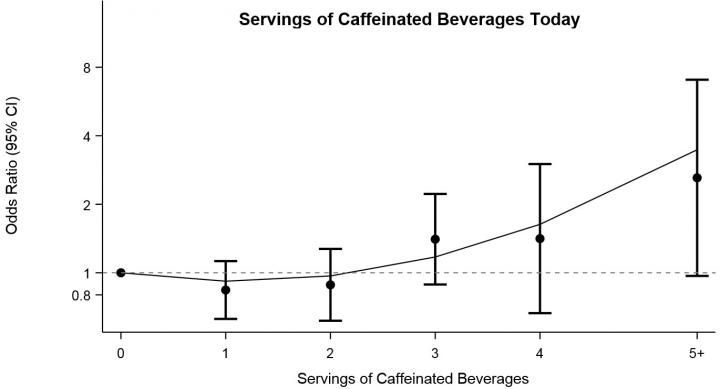While one or two cups don’t really seem to make a difference, drinking three or more cups of coffee a day seems to increase the risk of headaches.

Migraines can be very rough. An estimated 1 billion people around the world suffer from migraines which not only cause debilitating pain, but also render people unable to function properly. The role of coffee in migraines has not been properly explained — and to an extent, the full range of effects caused by coffee are not understood.
Almost 9 in 10 American adults consume coffee on a daily basis. It’s the most widely consumed beverage in the world, with over 400 billion cups consumed each year. Unsurprisingly, coffee has also been studied extensively, but although the fundamentals are pretty well known, the health impacts of coffee are still widely debated. The uncertainty is owed partly to the coffee itself and partly to humans, who process coffee in different ways.
The complex effect that coffee has on the human body — or rather, a part of it — has been explored in a new study. A team of researchers looked at the potentially harmful effects of coffee on migraine risk.
“To date, there have been few prospective studies on the immediate risk of migraine headaches with daily changes in caffeinated beverage intake. Our study was unique in that we captured detailed daily information on caffeine, headache, and other factors of interest for six weeks,” commented Suzanne M. Bertisch, principal investigator of the study, of Brigham and Women’s Hospital and Harvard Medical School.

Researchers aren’t exactly certain why migraines happen, but one of the most convincing theories has to do with blood vessels in the brain. The painful throbbing that most people experience during a migraine is owed to inflammation and swelling of blood vessels, which causes an increase in blood flow around the brain. Since coffee can raise blood pressure, it makes sense that coffee would play a role here — and previous studies have suggested that people may experience more migraines after coffee consumption, although coffee is not considered to be the cause of the migraines.
In the latest study, Bertisch and colleagues had 98 adults who suffer from episodic migraines reported in an electronic diary twice a day for six weeks. They reported on their coffee intake and other lifestyle factors, comparing the migraine frequency with coffee consumption.
The data showed that participants experienced an average of 5 headaches per month. However, those who consumed three or more servings reported a substantially larger number of migraines. This suggests that high levels of caffeinated beverage intake may be a trigger of migraine headaches on that day, the researchers note. Participants that had 0, 1, or 2 servings a day had around 1 headache per day, whereas those who had 5 or more servings had over 2 headaches per day on average.
“Based on our study, drinking one or two caffeinated beverages in a day does not appear to be linked to developing a migraine headache, however, three or more servings may be associated with a higher odds of developing a headache,” noted lead investigator Elizabeth Mostofsky.
It should be noted that it’s a small sample size and the study only established a correlation, not causation, but the methodology is thorough and it suggests a concerning association — although the extent of this concern is still debatable. At the very least, it warrants further investigation in a larger sample size — and for the hardcore coffee drinkers out there, you may want to rethink having that extra cup.
The study “Prospective Cohort Study of Caffeinated Beverage Intake as a Potential Trigger of Headaches among Migraineurs” has been published in the American Journal of Medicine.









